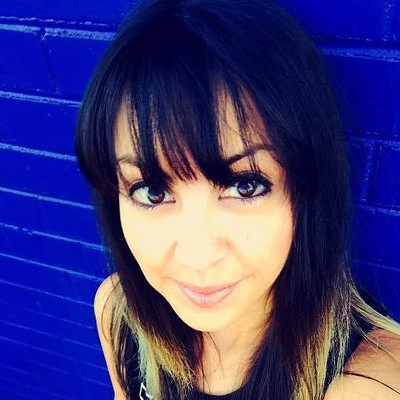“Have you heard of Gillette Syndrome?” That's the question Cortney Stell, Black Cube executive director and chief curator, poses as she begins to describe this Thursday's The New Denver + New Brutal discussion. “If a city grows really, really fast, a sense of community wanes. Gillette Syndrome is named after a town in Wyoming that experienced this.”
The program is being held in conjunction with New Brutal, the current Black Cube exhibition produced by artist/fellow Derrick Velasquez; Its inspiration was the recent boom in metro Denver, now home to 3.1 million people and seemingly constant construction. “This was originally just booked as an artist lecture,” Stell explains, but plans changed after she and the artist commuted back and forth from Denver to the Stanley Marketplace on the edge of Aurora. “Since Derrick and I live on the opposite end of town, throughout the course of the installation we have been having to drive through the Stapleton neighborhood, and we’d start seeing new buildings happening. In general, Derrick’s artwork is so relevant to what we’re all going through as a community in Denver.”
The discussion will now center on Denver’s new “look and feel,” as well as the impact on culture and communities in the metro area. Along with Velasquez, The New Denver + New Brutal panel will feature Mark Shaker, developer of the Stanley Marketplace; Michael Paglia, Westword art and architecture critic; Ted Manley, who teaches urban studies at Johnson & Wales University; and Brad K. Evans, founder of Denver FUGLY.
Shaker’s perspective is particularly interesting, Stell says, because because of his background in social work by trade and his current career as a developer. “I consider myself a sort of ‘fake’ real estate developer,” Shaker says in response. “I’ve been engaging this project as a real appreciation of the history of the building. I’ve been in the Stanley for two years, and just in the last two months I’ve been able to see it as a historic building with tons of condition and character juxtaposed with New Brutal.”
Both Manley and Evans bring perspectives on the aesthetics of Denver, an aspect that Velasquez plans to focus on, too. Evans's Denver FUGLY Facebook page includes hundreds of people who think recent additions to Denver’s architecture are “hideous,” Stell notes, and Manley is working on a publication about how some cities are masculine and gendered; he ses Velasquez’s New Brutal installation as phallic, according to Stell.
“If you look at my 'Vinyl' piece [in the Colorado Convention Center], it’s actually mostly vaginas,” Velasquez says. “For New Brutal, I’m using sloppy material. When it comes to construction, everything needs to hold up, so you’re building up. Whenever I get the most amount of space, I build as tall as I can get, and in this case you can see it as phallic.”
Velasquez hopes The New Denver + New Brutal will focus on the aesthetics of gentrification rather than the politics of the issue. He’s not “leaning” any one way about the matter, he adds. “I hope we can just break it down and talk about the aesthetics of buildings, from street level to the bird’s eye view. When you think about gentrification, it has an aesthetics component at the base of it.”
The New Denver + New Brutal will start at 7 p.m. Thursday, December 10, in the Stanley Marketplace, 2501 Dallas Street in Aurora. The event is free, but an RSVP is required at [email protected].
[
{
"name": "Air - MediumRectangle - Inline Content - Mobile Display Size",
"component": "12017618",
"insertPoint": "2",
"requiredCountToDisplay": "2"
},{
"name": "Editor Picks",
"component": "17242653",
"insertPoint": "4",
"requiredCountToDisplay": "1"
},{
"name": "Inline Links",
"component": "18838239",
"insertPoint": "8th",
"startingPoint": 8,
"requiredCountToDisplay": "7",
"maxInsertions": 25
},{
"name": "Air - MediumRectangle - Combo - Inline Content",
"component": "17261320",
"insertPoint": "8th",
"startingPoint": 8,
"requiredCountToDisplay": "7",
"maxInsertions": 25
},{
"name": "Inline Links",
"component": "18838239",
"insertPoint": "8th",
"startingPoint": 12,
"requiredCountToDisplay": "11",
"maxInsertions": 25
},{
"name": "Air - Leaderboard Tower - Combo - Inline Content",
"component": "17261321",
"insertPoint": "8th",
"startingPoint": 12,
"requiredCountToDisplay": "11",
"maxInsertions": 25
}
]











